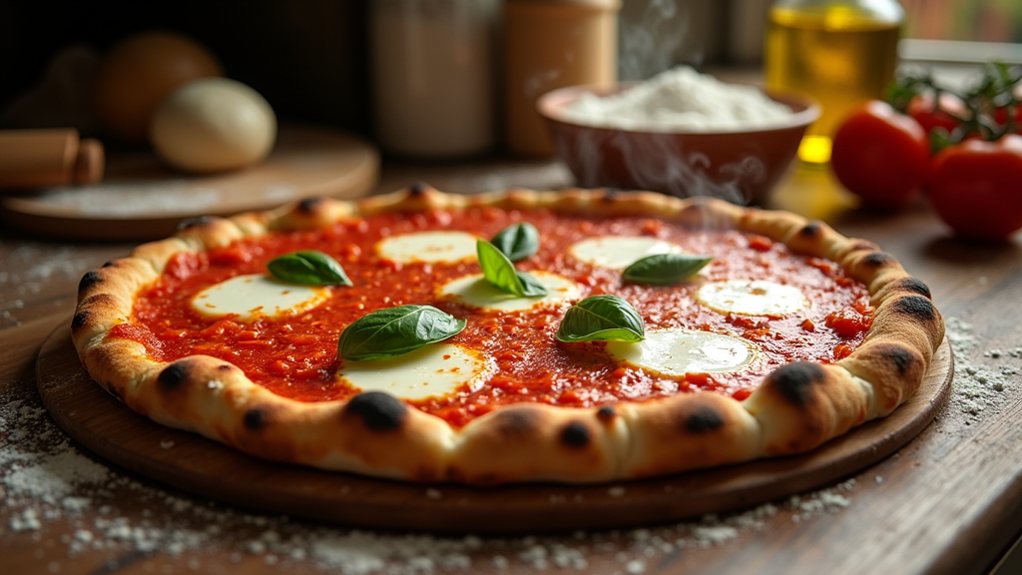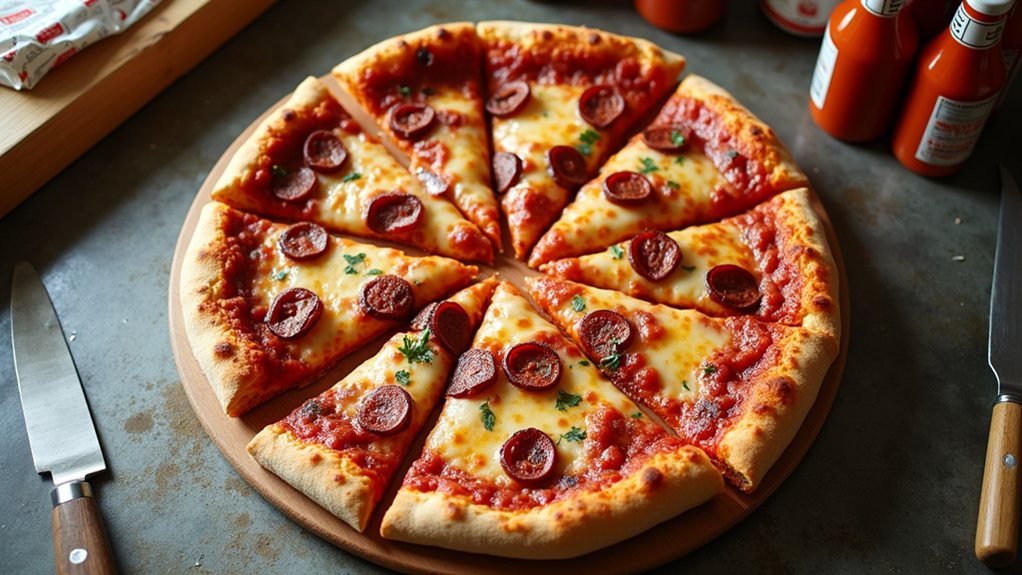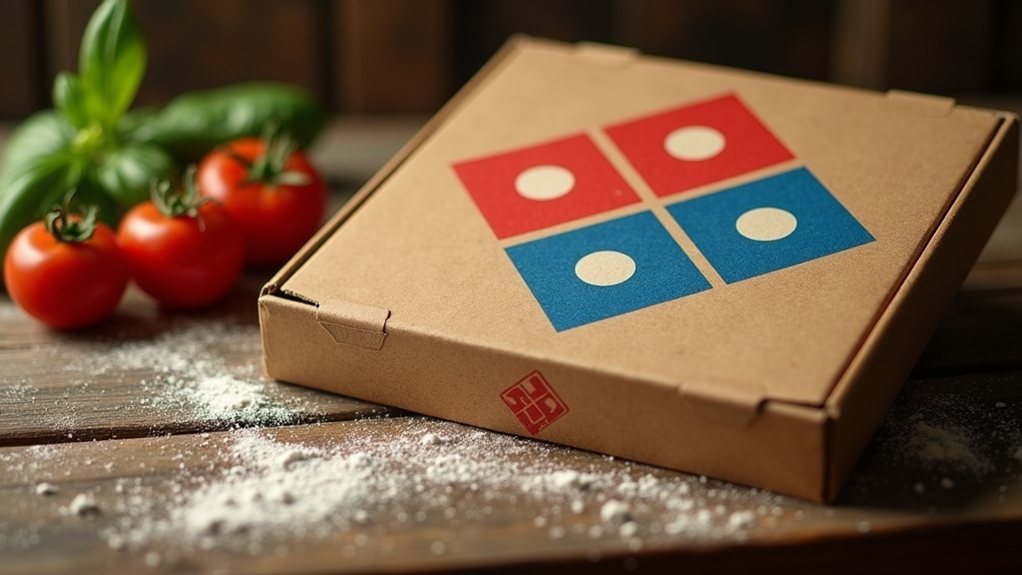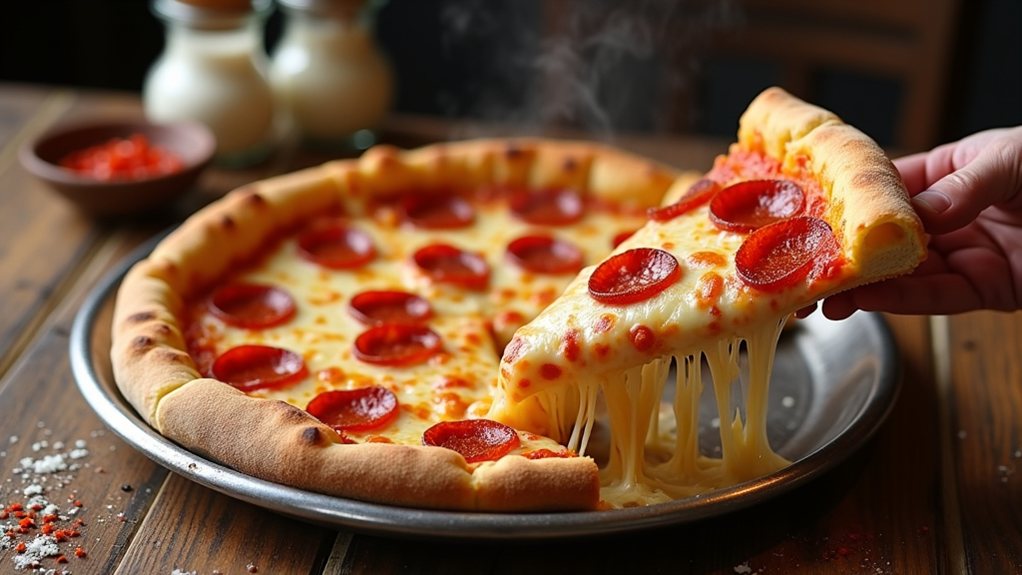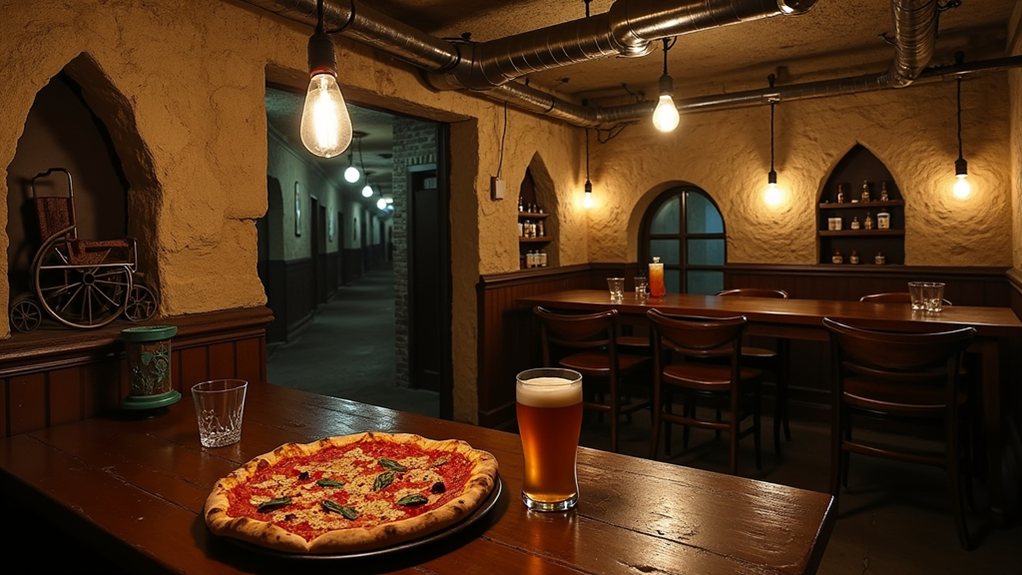I’ve spent years perfecting my Neapolitan pizza technique, and I’m convinced anyone can create this iconic dish at home with the right approach. The secret lies in understanding both the ingredients and the process—from selecting proper Caputo 00 flour to achieving that distinctive leopard-spotted crust. While most home cooks struggle with temperature limitations, I’ve uncovered several workarounds that deliver authentic results without a wood-fired oven. Want to know my three game-changing techniques?
The History and Tradition Behind Neapolitan Pizza

While most pizza lovers are familiar with the American-style pies that dominate food courts and delivery chains, Neapolitan pizza, dating back to the 18th century in Naples, Italy, represents the true origin of this beloved dish.
The authentic version follows strict traditional guidelines: a thin base with a puffy, charred crust that cooks in just 60-90 moments at scorching temperatures.
What makes this style special isn’t just its history but also its elegant simplicity—minimal toppings that highlight quality ingredients.
Naples takes this tradition so seriously that true Neapolitan pizza has protected status, ensuring the craft continues exactly as it began centuries ago.
Originally popular as street food among the working class due to its affordability and simplicity, Neapolitan pizza became a staple in the local diet.
Essential Equipment for Authentic Results
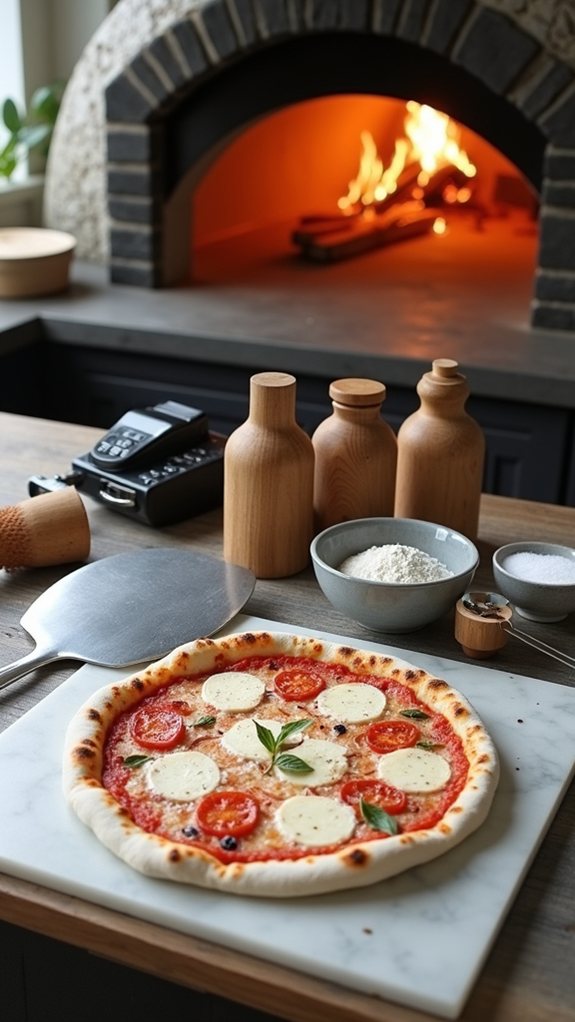
Aspiring pizza chefs face one undeniable truth: creating authentic Neapolitan pizza at home demands specialized equipment that conventional kitchens don’t provide.
Without the right tools, you’ll struggle to achieve that perfect char and pillowy texture that defines true Neapolitan pies.
Here’s what you’ll need to transform your kitchen into a pizza powerhouse:
- High-temperature pizza oven (reaching 900-1000°F)
- Pizza peel (wooden for loading, metal for turning)
- Digital infrared thermometer for monitoring surface temperatures
- Quality pizza stone or steel for heat retention
I’ve found these necessities make all the difference between good pizza and transcendent pizza.
The authentic 00 pizza flour provides the signature chew and structure that sets true Neapolitan dough apart from ordinary pizza crusts.
Selecting the Perfect Ingredients
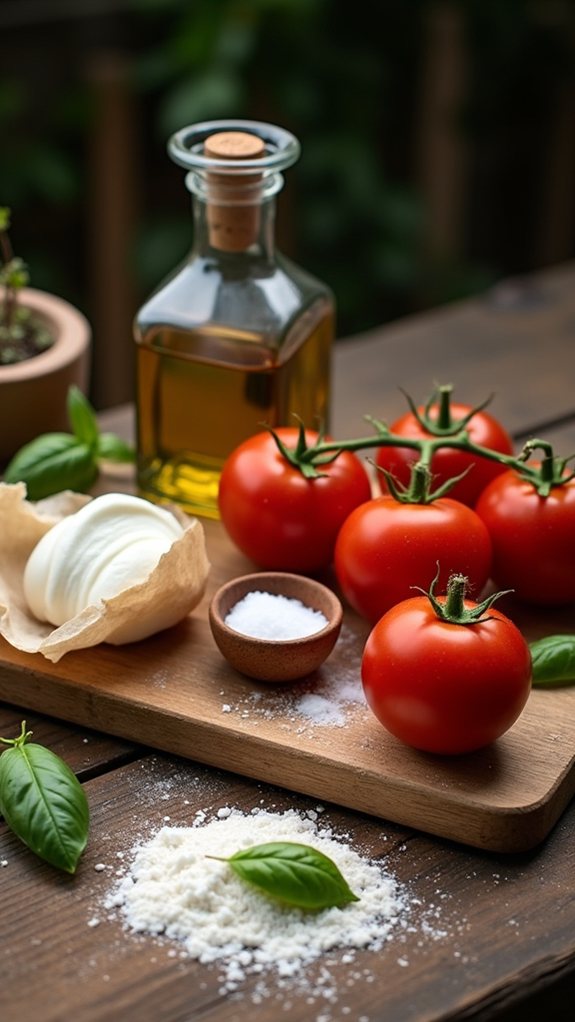
Three key ingredients form the foundation of every authentic Neapolitan pizza, and I’ve learned that compromising on any of them inevitably leads to disappointment. Quality flour, proper tomatoes, and the right cheese make all the difference between a good pizza and a transcendent one.
| Ingredient | Standard Option | Premium Choice |
|---|---|---|
| Flour | All-purpose | Caputo 00 |
| Tomatoes | Regular canned | San Marzano |
| Cheese | Regular mozz | Fior di latte |
| Water | Tap water | Filtered |
| Yeast | Active dry | Instant |
When sourcing ingredients, I always prioritize the flour and tomatoes. Caputo 00 flour creates that perfect chew, while good crushed tomatoes need nothing but salt. The Tipo 00 flour contributes to a uniquely smooth and elastic dough with the ideal balance of crispy exterior and soft interior.
Mastering the Dough: Techniques and Timing
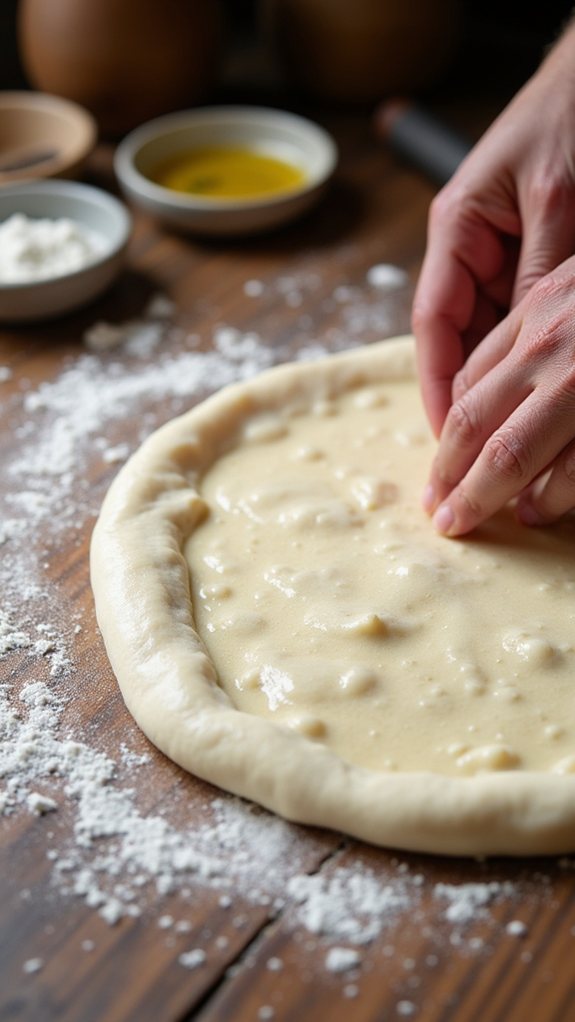
Although the perfectly charred crust of a Neapolitan pizza may seem like magic, I’ve found that it’s really about mastering a few fundamental techniques and understanding the crucial timing elements.
The dough is your canvas, and with proper attention, you’ll create something spectacular.
Here’s what you need to know:
- Mix 665g of double zero flour with 450g cool water, a pinch of yeast, and 18g salt
- Rest for 30 minutes, then perform stretch and folds
- Allow overnight fermentation (12 hours) for flavor development
- Divide into 275g balls and refrigerate for at least 2 hours
Sauce Preparation and Cheese Selection

Once you’ve mastered the dough fundamentals, it’s time to focus on the toppings that’ll transform your pizza from good to extraordinary. The perfect Neapolitan pizza relies on simple, quality ingredients handled with care.
| Ingredient | Recommendation | Why It Matters |
|---|---|---|
| Tomatoes | Bianco de Napoli crushed (28oz) | Sweet, balanced acidity |
| Salt | 7g per can | Amplifies tomato flavor |
| Cheese | Buff milk mozzarella (bocconcini) | Higher fat, better melt |
| Basil | Fresh leaves only | Aromatic finish |
I blend my sauce with an immersion blender until smooth, then strain the cheese whey before tearing it into small pieces. This prevents excess moisture that could make your crust soggy.
The Art of Pizza Assembly and Shaping
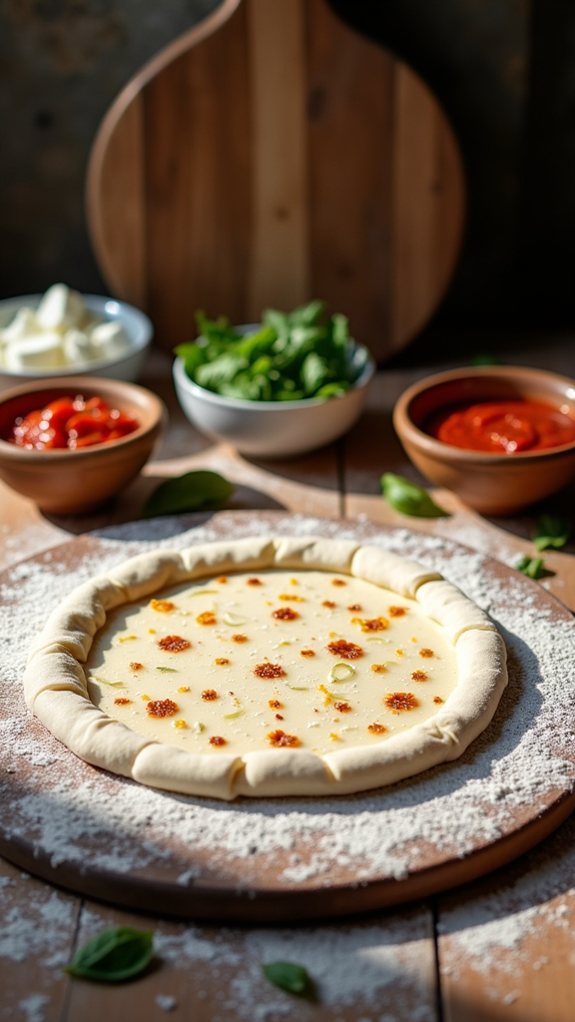
Shaping your pizza dough requires finesse and patience, which I’ve developed through countless attempts at achieving that perfect Neapolitan circle.
Once your dough has properly rested, it’s time to transform it into pizza magic.
Here’s my foolproof approach:
- Start with room-temperature dough balls as cold dough fights back.
- Use fingertips to press from the entrance outward, leaving a 1/2-inch border untouched.
- Stretch by draping over knuckles, rotating gently to maintain roundness.
- Work quickly but carefully—the dough knows when you’re nervous!
Cooking Techniques and Temperature Management
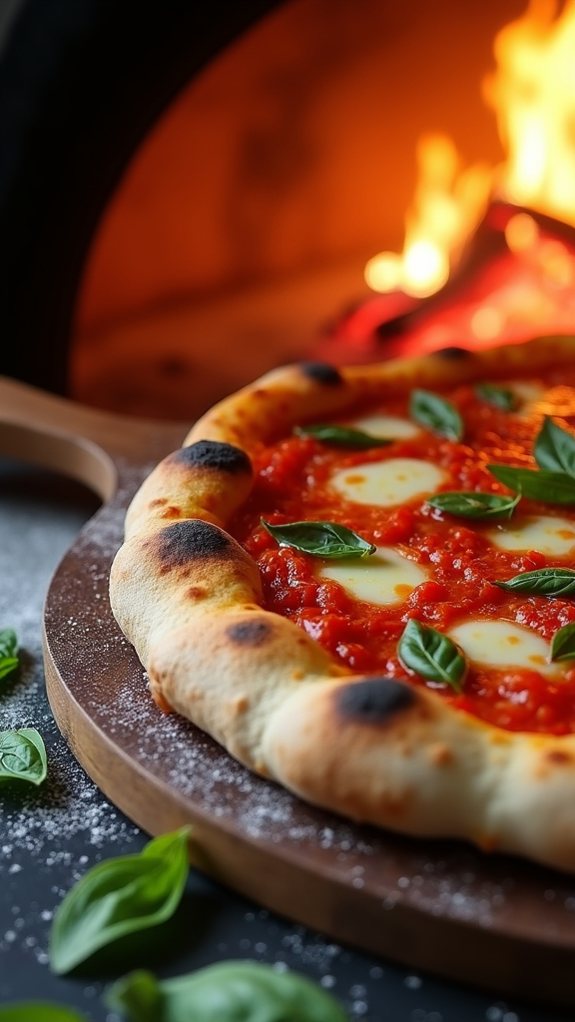
While mastering the art of Neapolitan pizza dough is essential, understanding proper cooking techniques and temperature management is where true pizza magic happens.
Your oven should reach scorching temperatures—ideally around 950°F in total, with the floor hitting 750°F. I’ve found that preheating for a full 30 minutes creates the perfect cooking environment.
Once your pizza’s in the oven, rotate it every 15 seconds for even cooking.
Watch for the telltale “leopard” on the crust, those beautiful charred spots that signal authenticity. The cheese should melt completely, and the crust should have slight charring—a balance that delivers that distinctive Neapolitan experience.
FAQs
Can I Make Neapolitan Pizza Without Double Zero Flour?
Yes, you can make Neapolitan pizza without 00 flour. I recommend bread flour as an alternative. Your pizza won’t be perfectly authentic, but with proper technique, it will still taste delicious.
Why Is My Pizza Soggy in the Middle Despite High Temperatures?
I’ve had this issue, too! Your pizza is likely soggy from excess moisture in the cheese or sauce. Strain your mozzarella well, and use less sauce in the center.
How Can I Prevent the Dough From Sticking to My Peel?
I generously use semolina flour on my peel before placing the dough. It acts like tiny ball bearings, allowing the pizza to slide off easily into the hot oven.
Is Instant Yeast Better Than Sourdough for Neapolitan Pizza?
While I prefer instant yeast for reliability and consistency with Neapolitan pizza, sourdough can offer more complex flavors. Both work well—it’s really about your preference and time constraints.
Can I Freeze Pizza Dough Balls for Later Use?
Yes, I freeze my pizza dough balls regularly! If well-wrapped, they’ll last up to three months. Just thaw them in the refrigerator overnight before you’re ready to make pizza.
